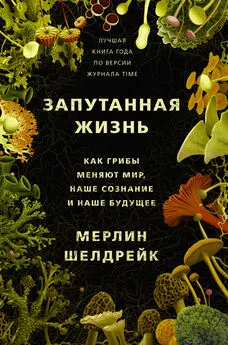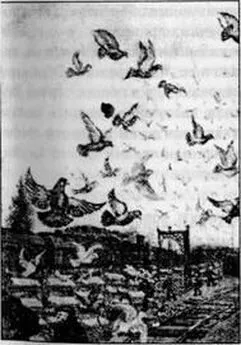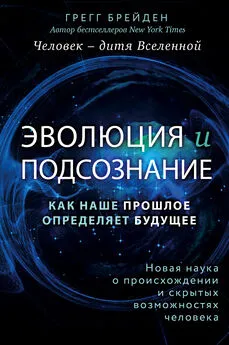Мерлин Шелдрейк - Запутанная жизнь. Как грибы меняют мир, наше сознание и наше будущее
- Название:Запутанная жизнь. Как грибы меняют мир, наше сознание и наше будущее
- Автор:
- Жанр:
- Издательство:Литагент АСТ
- Год:2021
- Город:Москва
- ISBN:978-5-17-122572-8
- Рейтинг:
- Избранное:Добавить в избранное
-
Отзывы:
-
Ваша оценка:
Мерлин Шелдрейк - Запутанная жизнь. Как грибы меняют мир, наше сознание и наше будущее краткое содержание
Талантливый молодой биолог Мерлин Шелдрейк переворачивает мир с ног на голову: он приглашает читателя взглянуть на него с позиции дрожжей, псилоцибиновых грибов, грибов-паразитов и паутины мицелия, которая простирается на многие километры под поверхностью земли (что делает грибы самыми большими живыми организмами на планете). Открывающаяся грибная сущность заставляет пересмотреть наши взгляды на индивидуальность и разум, ведь грибы, как выясняется, – повелители метаболизма, создатели почв и ключевые игроки во множестве естественных процессов. Они способны изменять наше сознание, врачевать тела и даже обратить нависшую над нами экологическую катастрофу. Эти организмы переворачивают наше понимание самой жизни на Земле.
В формате PDF A4 сохранен издательский макет.
Запутанная жизнь. Как грибы меняют мир, наше сознание и наше будущее - читать онлайн бесплатно ознакомительный отрывок
Интервал:
Закладка:
Pion M, Spangenberg J, Simon A, Bindschedler S, Flury C, Chatelain A, Bshary R, Job D, Junier P. 2013. Bacterial farming by the fungus Morchella crassipes. Proceedings of the Royal Society B 280: 20132242.
Pirozynski KA, Malloch DW. 1975. The origin of land plants: A matter of mycotrophism. Biosystems 6: 153–64.
Pither J, Pickles BJ, Simard SW, Ordonez A, Williams JW. 2018. Below-ground biotic interactions moderated the postglacial range dynamics of trees. New Phytologist 220: 1148–160.
Policha T, Davis A, Barnadas M, Dentinger BT, Raguso RA, Roy BA. 2016. Disentangling visual and olfactory signals in mushroom-mimicking Dracula orchids using realistic three-dimensional printed flowers. New Phytologist 210: 1058–71.
Pollan M. 2018. How to Change Your Mind: The New Science of Psychedelics . London, UK: Penguin.
Pollan M. 2013. The Intelligent Plant. The New Yorker : michaelpollan.com/articles-archive/the-intelligent-plant/ [accessed October 29, 2019].
Popkin G. 2017. Bacteria Use Brainlike Bursts of Electricity to Communicate. Quanta : www.quantamagazine.org/bacteria-use-brainlike-bursts-of-electricity-to-communicate-20170905/ [accessed October 29, 2019].
Porada P, Weber B, Elbert W, Pöschl U, Kleidon A. 2014. Estimating impacts of lichens and bryophytes on global biogeochemical cycles. Global Biogeochemical Cycles 28: 71–85.
Potts SG, Biesmeijer JC, Kremen C, Neumann P, Schweiger O, Kunin WE. 2010. Global pollinator declines: trends, impacts and drivers. Trends in Ecology & Evolution 25: 345–53.
Poulsen M, Hu H, Li C, Chen Z, Xu L, Otani S, Nygaard S, Nobre T, Klaubauf S, Schindler PM, et al. 2014. Complementary symbiont contributions to plant decomposition in a fungus-farming termite. Proceedings of the National Academy of Sciences 111: 14500–505.
Powell JR, Rillig MC. 2018. Biodiversity of arbuscular mycorrhizal fungi and ecosystem function. New Phytologist 220: 1059–75.
Powell M. 2014. Medicinal Mushrooms: A Clinical Guide . Bath, UK: Mycology Press.
Pozo MJ, López-Ráez JA, Azcón-Aguilar C, García-Garrido JM. 2015. Phytohormones as integrators of environmental signals in the regulation of mycorrhizal symbioses. New Phytologist 205: 1431–436.
Prasad S. 2018. An ingenious way to combat India’s suffocating pollution. The Washington Post : www.washingtonpost.com/news/theworldpost/wp/2018/08/01/india-pollution/ [accessed October 29, 2019].
Pressel S, Bidartondo MI, Ligrone R, Duckett JG. 2010. Fungal symbioses in bryophytes: New insights in the Twenty First Century. Phytotaxa 9: 238–53.
Prigogine I, Stengers I. 1984. Order Out of Chaos: Man’s New Dialogue with Nature . New York, NY: Bantam Books.
Prindle A, Liu J, Asally M, Ly S, Garcia-Ojalvo J, Süel GM. 2015. Ion channels enable electrical communication in bacterial communities. Nature 527: 59–63.
Purschwitz J, Müller S, Kastner C, Fischer R. 2006. Seeing the rainbow: light sensing in fungi. Current Opinion in Microbiology 9: 566–71.
Quéré C, Andrew RM, Friedlingstein P, Sitch S, Hauck J, Pongratz J, Pickers P, Korsbakken J, Peters GP, Canadell JG, et al. 2018. Global Carbon Budget 2018. Earth System Science Data Discussions : https://doi.org/10:5194/essd-2018-120 [accessed October 29, 2019].
Quintana-Rodriguez E, Rivera-Macias LE, Adame-Alvarez RM, Torres J, Heil M. 2018. Shared weapons in fungus-fungus and fungus-plant interactions? Volatile organic compounds of plant or fungal origin exert direct antifungal activity in vitro. Fungal Ecology 33: 115–21.
Quirk J, Andrews M, Leake J, Banwart S, Beerling D. 2014. Ectomycorrhizal fungi and past high CO2 atmospheres enhance mineral weathering through increased below-ground carbon-energy fluxes. Biology Letters 10: 20140375.
Rabbow E, Horneck G, Rettberg P, Schott J-U, Panitz C, L’Afflitto A, Heise-Rotenburg von R, Willnecker R, Baglioni P, Hatton J, et al. 2009. EXPOSE, an astrobiological exposure facility on the International Space Station – from proposal to flight. Origins of Life and Evolution of Biospheres 39: 581–98.
Raes J. 2017. Crowdsourcing Earth’s microbes. Nature 551: 446–47.
Rambold G, Stadler M, Begerow D. 2013. Mycology should be recognized as a field in biology at eye level with other major disciplines – a memorandum. Mycological Progress 12: 455–63.
Ramsbottom J. 1953. Mushrooms and Toadstools . London, UK: Collins.
Raverat G. 1952. Period Piece: A Cambridge Childhood . London, UK: Faber.
Rayner A. 1997. Degrees of Freedom . London, UK: World Scientific.
Rayner A, Griffiths GS, Ainsworth AM. 1995. Mycelial Interconnectedness. In The Growing Fungus . Gow NAR, Gadd GM, eds. London, UK: Chapman & Hall, pp. 21–40.
Rayner M. 1945. Trees and Toadstools . London, UK: Faber and Faber.
Read D. 1997. Mycorrhizal fungi: The ties that bind. Nature 388: 517–18.
Read N. 2018. “Fungal cell structure and organization.” In Oxford Textbook of Medical Mycology. Kibbler CC, Barton R, Gow NAR, Howell S, MacCallum DM, Manuel RJ, eds. Oxford, UK: Oxford University Press, pp. 23–34.
Read ND, Lichius A, Shoji J, Goryachev AB. 2009. Self-signalling and self-fusion in filamentous fungi. Current Opinion in Microbiology 12: 608–15.
Redman RS, Rodriguez RJ. 2017. “The Symbiotic Tango: Achieving Climate-Resilient Crops Via Mutualistic Plant-Fungus Relationships.” In Functional Importance of the Plant Microbiome, Implications for Agriculture, Forestry and Bioenergy . Doty S, ed. Springer International Publishing, pp. 71–87.
Rees B, Shepherd VA, Ashford AE. 1994. Presence of a motile tubular vacuole system in different phyla of fungi. Mycological Research 98: 985–92.
Reid CR, Latty T, Dussutour A, Beekman M. 2012. Slime mold uses an externalized spatial “memory” to navigate in complex environments. Proceedings of the National Academy of Sciences 109: 17490–494.
Relman DA. 2008. “Til death do us part”: coming to terms with symbiotic relationships. Forward. Nature Reviews Microbiology 6: 721–24.
Reynaga-Peña CG, Bartnicki-García S. 2005. Cytoplasmic contractions in growing fungal hyphae and their morphogenetic consequences. Archives of Microbiology 183: 292–300.
Reynolds HT, Vijayakumar V, Gluck-Thaler E, Korotkin H, Matheny P, Slot JC. 2018. Horizontal gene cluster transfer increased hallucinogenic mushroom diversity. Evolution Letters 2: 88–101.
Rich A. 1994. “Notes Toward a Politics of Location.” In Blood, Bread, and Poetry: Selected Prose, 1979–1985 . New York, NY: W. W. Norton.
Richards TA, Leonard G, Soanes DM, Talbot NJ. 2011. Gene transfer into the fungi. Fungal Biology Reviews 25: 98–110.
Rillig MC, Aguilar-Trigueros CA, Camenzind T, Cavagnaro TR, Degrune F, Hohmann P, Lammel DR, Mansour I, Roy J, van der Heijden MG, et al. 2019. Why farmers should manage the arbuscular mycorrhizal symbiosis: A response to Ryan & Graham (2018) “Little evidence that farmers should consider abundance or diversity of arbuscular mycorrhizal fungi when managing crops.” New Phytologist 222: 1171–175.
Rillig MC, Lehmann A, Lehmann J, Camenzind T, Rauh C. 2018. Soil Biodiversity Effects from Field to Fork. Trends in Plant Science 23: 17–24.
Riquelme M. 2012. Tip growth in filamentous fungi: a road trip to the apex. Microbiology 67: 587–609.
Ritz K, Young I. 2004. Interactions between soil structure and fungi. Mycologist 18: 52–59.
Robinson JM. 1990. Lignin, land plants, and fungi: Biological evolution affecting Phanerozoic oxygen balance. Geology 18: 607–10.
Rodriguez R, White JF, Arnold A, Redman R. 2009. Fungal endophytes: diversity and functional roles. New Phytologist 182: 314–30.
Rodriguez-Romero J, Hedtke M, Kastner C, Müller S, Fischer R. 2010. Fungi, hidden in soil or up in the air: light makes a difference. Microbiology 64: 585–610.
Rogers R. 2012. The Fungal Pharmacy . Berkeley, CA: North Atlantic Books.
Roper M, Dressaire E. 2019. Fungal biology: bidirectional communication across fungal networks. Current Biology 29: R130–R132.
Roper M, Lee C, Hickey PC, Gladfelter AS. 2015. Life as a moving fluid: fate of cytoplasmic macromolecules in dynamic fungal syncytia. Current Opinion in Microbiology 26: 116–22.
Roper M, Seminara A. 2017. Mycofluidics: the fluid mechanics of fungal adaptation. Annual Review of Fluid Mechanics 51: 1–28.
Roper M, Seminara A, Bandi M, Cobb A, Dillard HR, Pringle A. 2010. Dispersal of fungal spores on a cooperatively generated wind. Proceedings of the National Academy of Sciences 107: 17474–479.
Roper M, Simonin A, Hickey PC, Leeder A, Glass LN. 2013. Nuclear dynamics in a fungal chimera. Proceedings of the National Academy of Sciences 110: 12875–880.
Ross AA, Müller KM, Weese JS, Neufeld JD. 2018. Comprehensive skin microbiome analysis reveals the uniqueness of human skin and evidence for phylosymbiosis within the class Mammalia. Proceedings of the National Academy of Sciences 115: E5786–E5795.
Ross S, Bossis A, Guss J, Agin-Liebes G, Malone T, Cohen B, Mennenga S, Belser A, Kalliontzi K, Babb J, et al. 2016. Rapid and sustained symptom reduction following psilocybin treatment for anxiety and depression in patients with life-threatening cancer: a randomized controlled trial . Journal of Psychopharmacology 30: 1165–180.
Roughgarden J. 2013. Evolution’s Rainbow . Berkeley, CA: University of California Press.
Rouphael Y, Franken P, Schneider C, Schwarz D, Giovannetti M, Agnolucci M, Pascale S, Bonini P, Colla G. 2015. Arbuscular mycorrhizal fungi act as biostimulants in horticultural crops. Scientia Horticulturae 196: 91–108.
Rubini A, Riccioni C, Arcioni S, Paolocci F. 2007. Troubles with truffles: unveiling more of their biology. New Phytologist 174: 256–59.
Russell B. 1956. Portraits from Memory and Other Essays . New York, NY: Simon and Schuster.
Ryan MH, Graham JH. 2018. Little evidence that farmers should consider abundance or diversity of arbuscular mycorrhizal fungi when managing crops. New Phytologist 220: 1092–107.
Sagan L. 1967. On the origin of mitosing cells. Journal of Theoretical Biology 14: 225–74.
Salvador-Recatalà V, Tjallingii FW, Farmer EE. 2014. Real-time, in vivo intracellular recordings of caterpillar-induced depolarization waves in sieve elements using aphid electrodes. New Phytologist 203: 674–84.
Sample I. 2018. Magma shift may have caused mysterious seismic wave event. The Guardian : www.theguardian.com/science/2018/nov/30/magma-shift-mysterious-seismic-wave-event-mayotte [accessed October 29, 2019].
Samorini G. 2002. Animals and Psychedelics: The Natural World and the Instinct to Alter Consciousness . Rochester, VT: Park Street Press.
Sancho LG, de la Torre R, Pintado A. 2008. Lichens, new and promising material from experiments in astrobiology. Fungal Biology Reviews 22: 103–9.
Sapp J. 2004. The dynamics of symbiosis: an historical overview. Canadian Journal of Botany 82: 1046–56.
Sapp J. 1994. Evolution by Association . Oxford, UK: Oxford University Press.
Sapp J. 2009. The New Foundations of Evolution . Oxford, UK: Oxford University Press.
Читать дальшеИнтервал:
Закладка:









